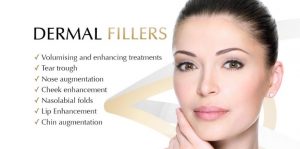 How Do Wrinkle Dermal Fillers Work?
How Do Wrinkle Dermal Fillers Work?
Skin is one of the most complex parts of the human body, with literally millions of tiny cells contributing to what are commonly referred to as our dermal layers. Each of these layers will expand, contract and grow as we get older – but once we become adults, the collagen that would have been produced in larger volumes will start to dwindle. As a result, wrinkles can begin to appear due to the lack of elasticity within the skin.
Wrinkle fillers are a type of treatment offered by beauty therapists and other trained specialists, whereby a formula containing a variety of chemicals and ingredients will be injected into the skin. Once absorbed by the nearby skin cells, the formula will trigger a reaction that can cause the surrounding skin cells to expand, filling gaps in the process.
Are Dermal Fillers and Botox the Same Thing?
No would be the short answer. Where Botox is the name of a branded anti-ageing treatment that works by paralysing muscles to stop the further development of wrinkles temporarily, fillers work by plumping out any cells that are present. They only work on a temporary basis, so repeat treatments will usually be required to sustain a youthful complexion; but as the ingredients used are fairly harmless and FDA approved in the majority of instances, there is little to no risk.
The main concerns can arise if an individual has a reaction to some of the chemicals present within the formula. As the chemicals will be injected into the skin and often when blood cells will only frequent in small volumes, it’s not always easy for the body to distribute white blood cells to fight the signs and causes of inflammation.
As a result, allergic reactions can occur every so often – although most therapists will suggest a trial injection to gauge the severity and likelihood of these events occurring.
Are Dermal Fillers Safe to Use?
As most branded dermal fillers are FDA approved, they are widely regarded as some of the safest forms of treatment around. Some of the most popular brands include Restylane and Hylaform, as well as the Juvederm range. These fillers are typically only available within a cosmetic environment and are strictly regulated to minimise the risk of reactions within patients.
That being said, booking an appointment for these anti-ageing treatments can be very straight forward. In most cases a therapist will suggest a brief test whereby a potential patient is exposed to the formula and if no reaction is measured, then the treatment can be deemed safe for use. In any event, these fillers will usually last for up two years in some cases, with six months being considered the minimum amount of time that the formulation can last.
Talking about: “What are dermal fillers
Dr Shaun Segal